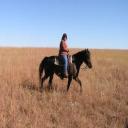Yahoo Answers is shutting down on May 4th, 2021 (Eastern Time) and beginning April 20th, 2021 (Eastern Time) the Yahoo Answers website will be in read-only mode. There will be no changes to other Yahoo properties or services, or your Yahoo account. You can find more information about the Yahoo Answers shutdown and how to download your data on this help page.
Trending News
So does anybody here REALLY know anything about horse color genetics.?
10 points if you answer correctly. If i want to breed a palomino mare, to a palomino stud, can I get a bay? Also what colors am I likely to get? I know the answer, do you?
I see waayy too many people asking breeding questions on here and their only concern is getting the color they want. You should be more concerned with conformation and attitude than with colr, but if your horse has the conformation and good attitude, then it is important to understand how to get the color you want.
8 Answers
- twhriderLv 51 decade agoFavorite Answer
No, you can not get a bay. In order to get a bay, you have to have a black gene from somewhere, and since palomino is redXred with a cream modifier, it ain't gonna happen. Palomino to Palomino, you have a 25% chance of getting a red (chestnut or sorrel, depends on modifiers present, which weren't specified), 50% chance for palomino, and a 25% chance for a cremello (redXred with two cream modifiers).
- Anonymous1 decade ago
It depends...if the palomino stud has 100% palomino color certainty then no, you will end up with a palomino-definately. If the palomino stud had 50% palomino color certainty then you could get palomino or the stud's dam/sire's colors or the mare's dam/sire's colors. Any less percentage of color certainty, you are more likely to get a lucky dip.
The palomino comes from a chestnut so the dam/sire of the stud or mare are more likely to have chestnut in them than bay so it is possible but very very unlikely that you could get a bay from breeding two palominos.
X
Source(s): Me and my uncle who works on a stud farm. - super_goofychickLv 61 decade ago
ok a palomino has one red gene and one creme/dilute gene so if you cross two palominos you could get the following:
sorrel/chesnut (two copies of the red gene) 25% of the time
cremello (two copies of the creme gene) 25 % of the time
palomino (one red and one creme gene) 50% of the time
those are the only possible color combinations assuming the two horses are just palominos and not carrying any modifiers (like roan, grey, sabino, etc..)
- Anonymous1 decade ago
It all depends if either of the palomino's have a bay gene in them, if they both do then you may end up with a bay, if only one does, its not probably going to be a bay.
I can't tell you what other colours are possible unless both of the horses are pure palomino's annd have no other colour in their genetics, if thats the case you may end up with a double dilute like a cremello or perlino.
Source(s): My own Cremello, studying at school and articles. - How do you think about the answers? You can sign in to vote the answer.
- bbswampgirlLv 51 decade ago
Answer is no, you couldn't get a bay from a cross of 2 palominos. Palominos are dilute forms of chestnuts, which don't carry the gene needed for black markings of bay horses. Not sure, but I am guessing if you breed a dilute to a dilute you get a dilute (palomino) or possibly a double dilute which could be cremello, light palomino, etc.
Dilute form of bay is buckskin/dun.
EDIT
danii - palominos can't have bay in their genetic makeup. All horse colors stem from one of two base color genes. Basically, most colors of horses are variations of either black OR chestnut. Any horse with black points and/or black hair in its mane and tail is carrying the black gene. Horses carrying the chestnut gene will have no black on their coats or in their manes and tails.
Furthermore, there are numerous other genes that act upon the black and chestnut genes to add even more variation in the way that color is expressed. Some of the additional genes are the graying gene, the dappling gene, the white gene, and the roan gene. These genes, and several others, can occur singly or in combination with others with the black and chestnut genes. Colors such as buckskin, bay, and blue roan are all expressions of different genes interacting with the black gene. Colors such as palomino, sorrel, and strawberry roan are all expressions of different genes interacting with the chestnut gene. There are additional color genes that interact with both the black and the chestnut genes to give rise to colors; however, appaloosa spotting, white from pinto patterns, and face or leg markings, are all the result of additional genes acting separately from the base color genes.
- ღஜღEasy RiderღஜღLv 51 decade ago
50.00% - Palomino
25.00% - Cremello
25.00% - Chestnut
Without knowing the sire and dams color and going by the 2 intended to breed.
Now tell me how to get a brindle horse...... : )
- 1 decade ago
People need to read this book it will tell you what colours you will get when you breed what with what.
http://www.amazon.com/Horse-Color-Explained-Breede...
horse colour explaind by Jeanette Gower
Source(s): I have it but can't find it at moment - Gentle SpiritLv 41 decade ago
You're supposed to be asking questions here - not testing people. Get off your "high horse".






